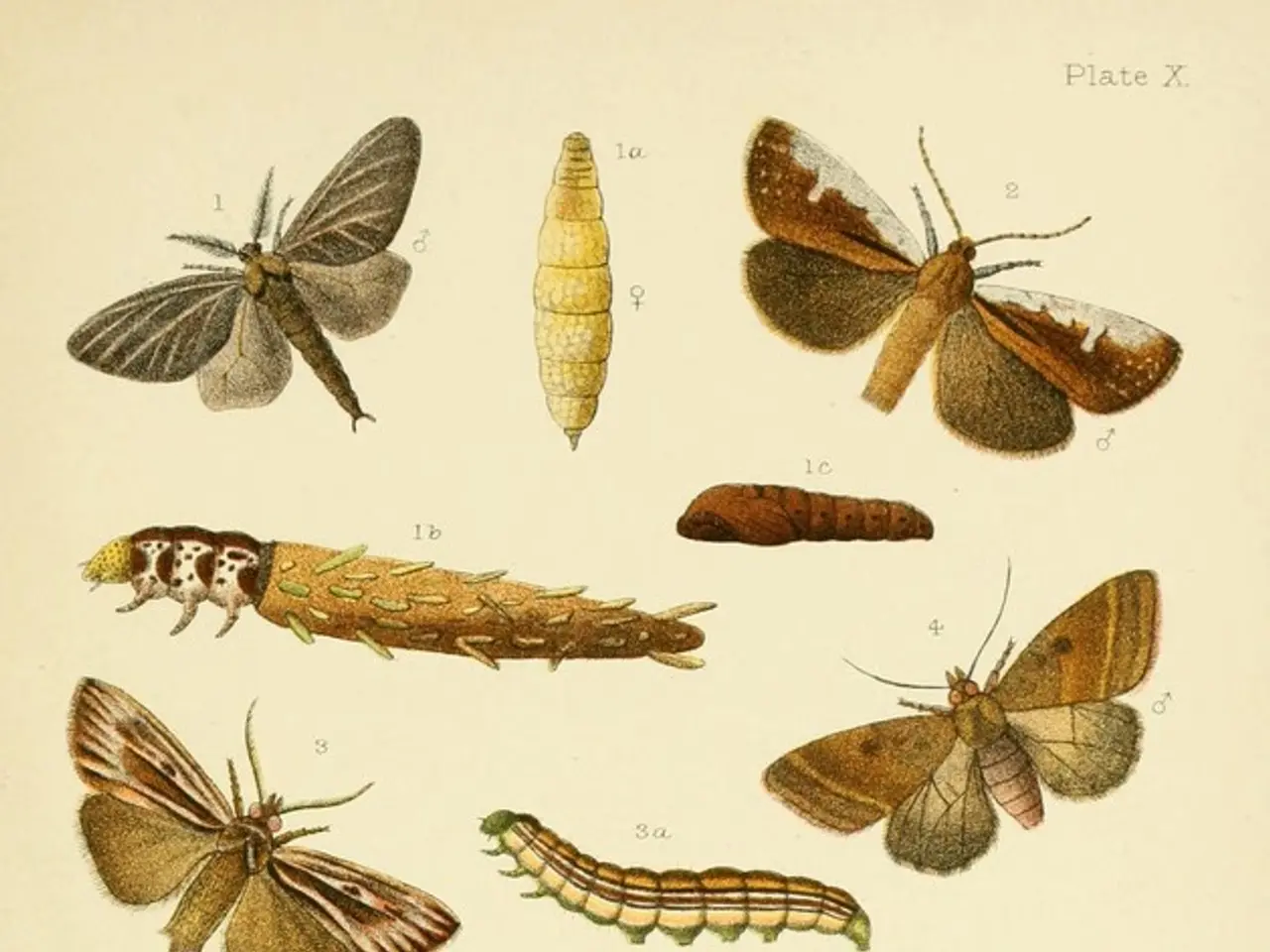Encouraging Visitation of Pollinating Insects in Your Garden
============================================================
In an effort to help sustain pollinator populations, gardeners can take several steps to create pollinator-friendly gardens. By planting a variety of nectar- and pollen-rich plants across all three main seasons, providing essential habitats, and avoiding harmful chemicals, gardeners can make a significant impact.
First and foremost, it's crucial to plant at least three different pollinator-friendly species per season to ensure year-round blooms. Clustering these plants together in round, dense groups rather than scattering them individually will help pollinators efficiently forage nearby.
One innovative approach is creating bee lawns by mixing flowering plants into turfgrass. This attractive solution not only benefits many native bee species but also allows for continued recreational lawn use.
Native plants are particularly beneficial, as they are known to attract local pollinators. Examples include lavender, foxgloves, verbena, and echinacea. Establishing hedgerows and shrubs like ninebark also provides pollen and shelter at different times of the growing season, supporting diverse pollinator species.
Avoiding chemical pesticides or using pollinator-safe alternatives is another important action gardeners can take to protect beneficial insects. Providing basic habitat needs such as nesting sites, water sources, sunny locations, and leaving leaf litter as overwintering habitat for insects is also essential.
Community resources and local native seed distributions, like AdkAction’s Native Wildflower packets, can help gardeners choose appropriate plants and build pollinator-friendly gardens.
Early-blooming trees such as maples, willows, and redbuds are particularly important for providing food at especially critical times. Bumble bees prefer to nest in pre-existing cavities with some form of insulation, both above and below ground. A water source in the garden helps thirsty pollinators, especially in the heat of summer.
Purchased or constructed bumble bee nesting structures are generally considered unsuccessful at attracting bumble bee queens. Instead, gardeners can encourage cavity-nesting bees by creating artificial nesting sites.
Different species of bees, butterflies, and other pollinators are active in Ohio at different times of the year. For example, early spring pollinators in Ohio include queen bumble bees, mourning cloak butterflies, and blue orchard bees. Monarch butterflies, worker bumble bees, and worker honey bees are active from spring into the cooler days of autumn.
Many plants frequently considered weeds do provide food for pollinators, including dandelions, milkweed, goldenrod, and clover. However, some cultivars and hybrids may not offer the same pollen and nectar rewards as "straight species," as the quality and quantity of nectar and pollen are sometimes lost during breeding.
Plants that provide important sources of nectar and pollen for pollinators include trees like maple, crabapple, linden, and serviceberry, shrubs like ninebark, pussy willow, sumac, and viburnum, perennials like aster, hyssop, milkweed, and purple coneflower, annuals like cosmos, marigold, sunflower, and zinnia, and herbs like basil, borage, catmint, lavender, and oregano.
Flowers planted in and near vegetable gardens and fruit plantings help bring pollinators and other beneficial insects into the garden. By following these guidelines, gardeners can help ensure a thriving pollinator population and a beautiful, blooming garden.
- To nurture sustainable lifestyle and support environmental science, consider taking up gardening as a hobby and incorporating pest management practices that prioritize conservation.
- By learning about soil health and optimizing it for maximum nutrient stability, your plants will yield better crops, enhancing food-and-drink experiences at home.
- Embarking on a career-development journey could involve exploring education-and-self-development opportunities in the realm of environmental-science or perhaps even in the farming or horticulture industry.
- If you're a fashion-and-beauty enthusiast, you might find inspiration for unique pet accessories or eco-friendly home-and-garden decor from the variety of colors and patterns found in blooming flowers.
- Engaging in skills-training programs for gardening and pest management techniques could equip you with valuable tools for personal-growth and job-search success in the sector.
- As a traveler, take time to explore local farming communities, botanical gardens, and nature reserves to learn about their unique conservation efforts and pollinator-friendly practices.
- In addition to cultivating blooms for human enjoyment, make sure to cultivate relationships with like-minded individuals who share a passion for pollinator conservation, and learn from their experiences.
- Adopting pets such as bees can instill a sense of responsibility for their care and welfare in children, encouraging empathy and healthy pet-raising practices.
- During shopping trips, look for eco-friendly, pollinator-safe products to minimize negative impact on both the environment and beneficial insects.
- As climate-change continues to alter pollinator habits and lifecycles, understanding these impacts is crucial for successful pest management and long-term conservation efforts.
- Incorporating pollinator-friendly plants in your garden not only enhances its aesthetic appeal but also supports the overall well-being of the surrounding ecosystem, establishing a ever-blooming relationship between man and nature.




